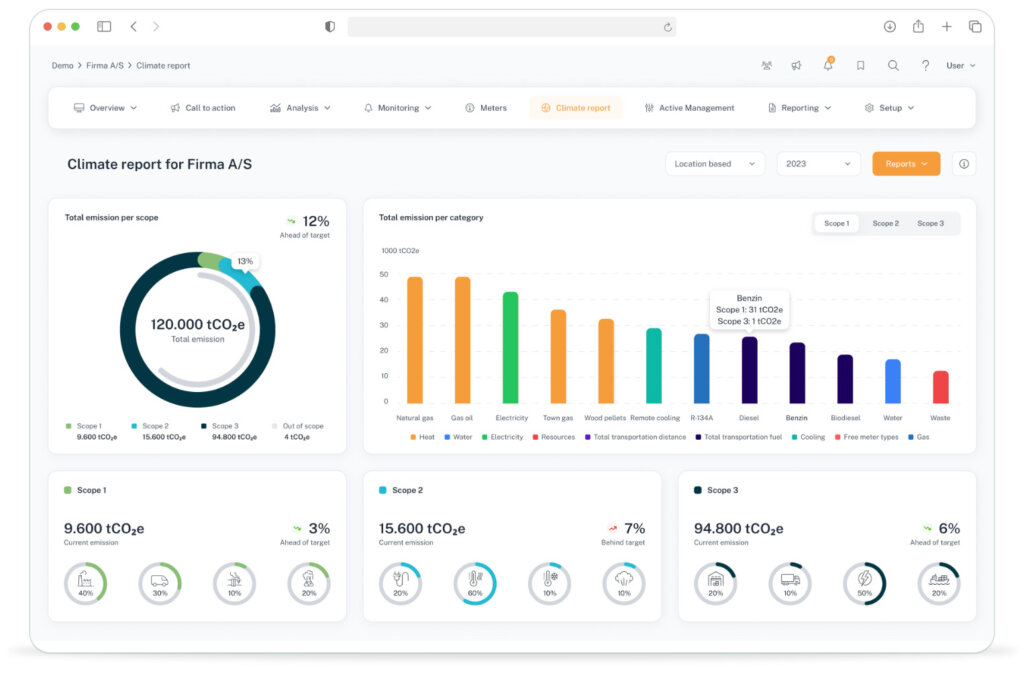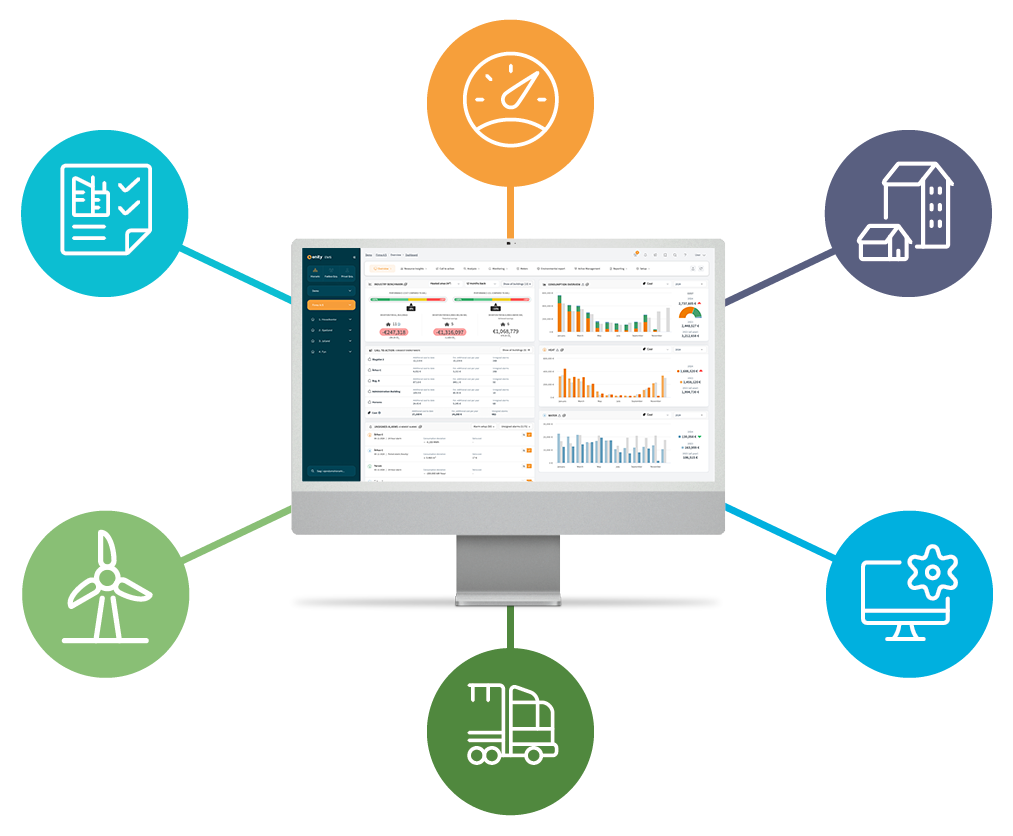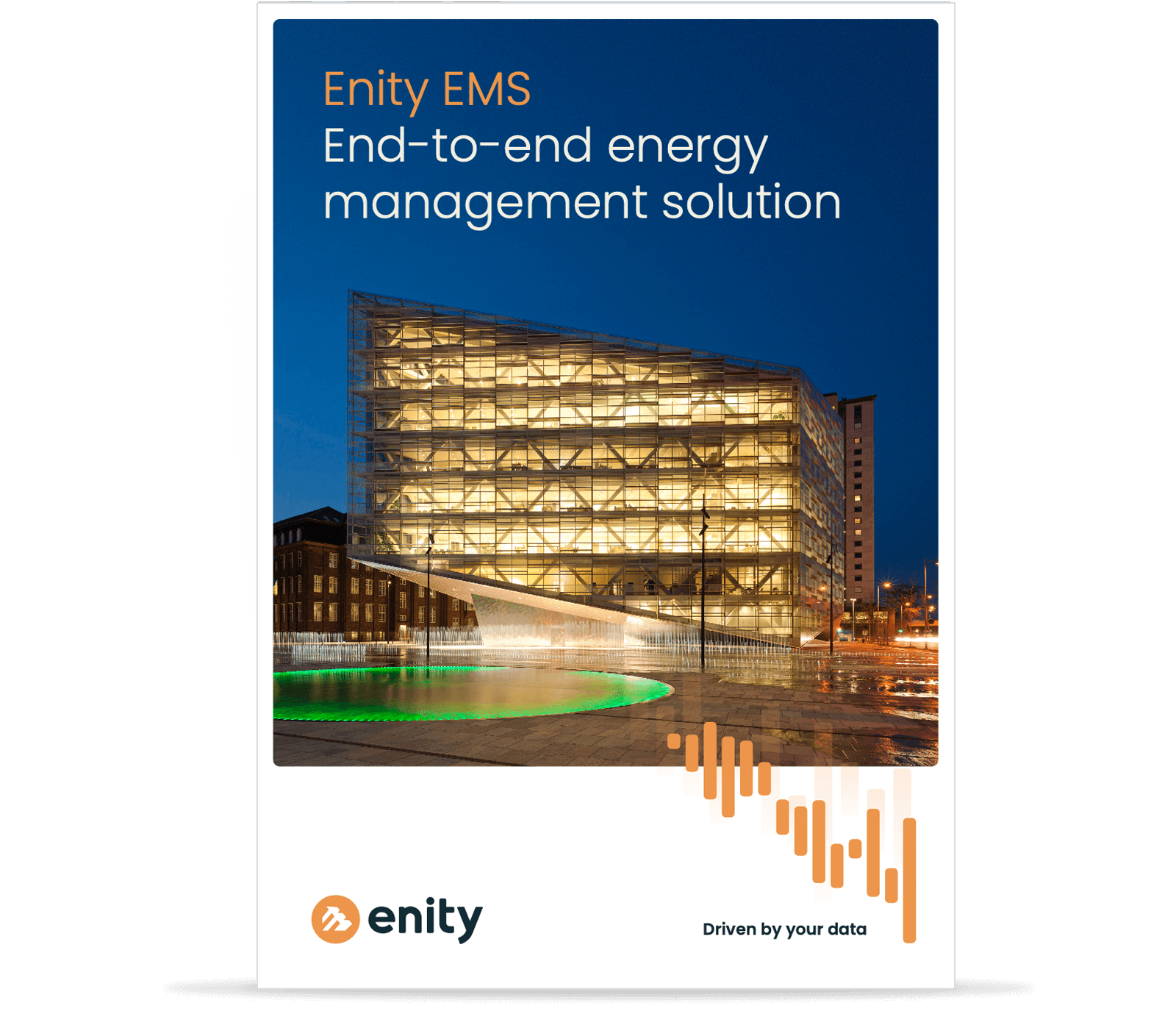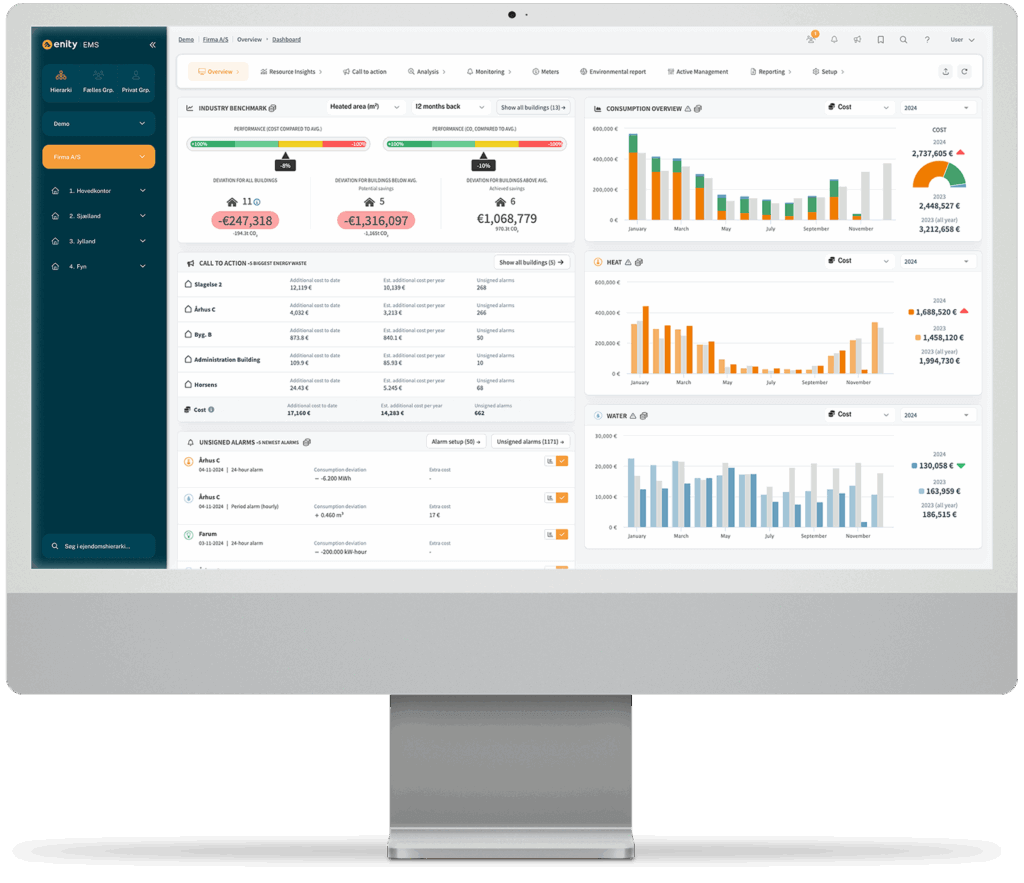
EMS-based carbon accounting
Standard vs. EMS-based carbon accounting
The difference between a standard carbon accounting solution and an EMS-based solution
The difference between a standard carbon accounting solution and an EMS-based solution (Energy Management System) lies in their focus and functionality, as well as the degree of automation and simplification of the energy-related processes.
| Standard carbon accounting | EMS-based carbon accounting | |
|---|---|---|
| Purpose | A carbon accounting solution is used to calculate and report the company’s overall CO2 emissions and other environmental impacts. It focuses on calculating emissions related to energy consumption, transportation, waste, procurement, and production. | An EMS is used for real-time monitoring, management, and optimization of energy and resource consumption in a company or building. The focus is on continuously improving energy efficiency, reducing energy consumption, and minimizing energy waste. |
| Sources | Energy consumption, transportation, waste, procurement and production. | Consumption from electricity, heating, cooling, water, transportaiton, waste. Energy production from windmills, solarcells, excess heating. |
| Data | Typically uses data from energy consumption, production figures, logistics, and supply chains to calculate overall environmental impact (e.g., CO2 emissions). Registration of data is based on a higher degree of manual entry of invoice information and manual processes. | Based on remote and automated data collection, detailed real-time data is gathered from sensors and meters in buildings, production equipment, and other energy-consuming systems. |
| Output | Provides reports that help companies comply with regulations, benchmark their environmental performance, and communicate to stakeholders that they are taking climate responsibility. | Provides actionable insights that can be used to optimize energy consumption in real-time. The system can automatically regulate energy-intensive systems like HVAC (heating, ventilation, and air conditioning), lighting, or machinery. |
| Focus | Carbon accounting often has a macro approach and is not necessarily designed to optimize daily energy consumption. Instead, it provides an overall picture of climate impact over a period. | Focuses on the daily optimization and efficiency of energy consumption, leading to reduced energy waste and lower operational costs. It can also contribute to reducing CO2 emissions as a side effect of improved energy efficiency. |
| Key Difference | A carbon accounting solution provides an overview of a company’s total CO2 footprint but is typically historical and reporting-based. | An EMS-based solution is an operational and dynamic platform aimed at day-to-day energy management and optimization, reducing climate impact, but with a more practical and tangible focus on energy savings. At the end of the year, the carbon accounting report is generated with one click, based on complete automation. |
Enity EMS
How does Enity EMS support your carbon & environmental reporting?
With our EMS platform for digital energy management, we simplify and automate the task of data collection and documentation for your carbon accounting.


Choose a flexible and integrable solution
The system’s ability to integrate with other systems is important when it comes to data sources for your carbon accounting. Enity EMS is an open and fully integrable platform, with the ability to integrate through APIs with other systems.
Enity EMS can serve as both the primary and secondary system in your solution. As the core system in your overall carbon footprint calculation, we receive supplementary data from other systems. As a supplementary system, we provide energy data to the primary system you have chosen.

Download brochure
Read more about energy efficiency with Enity EMS. To the benefit of both the budget and the climate.

Book a demo
We show you the possibilities and potentials for optimizing your energy consumption.